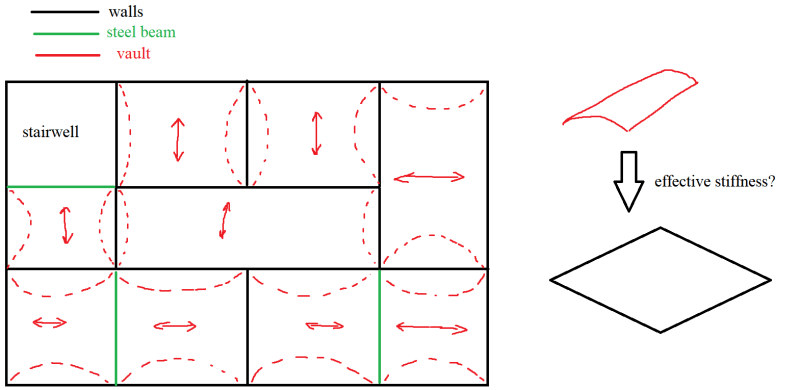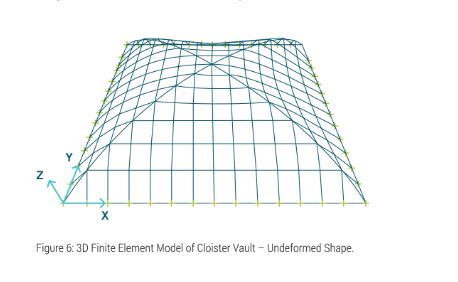hardbutmild
Structural
- Aug 10, 2019
- 294
Does anyone have a book or an article suggestion where this is defined? I need to do a seismic design of a building that's over 100 years old and some floors are made of masonry barrel vaults. I'd like to learn more about masonry vault plates, but can't find any info anywhere. Some vaults span in x direction, some span in y, some are directly supported by walls, some lie on steel beams. I drew a quick sketch of typical building. Also, is there a way to model it like a plane element to get equivalent stiffness of the vault? I much prefer to use plane elements instead of curved ones.

It seems like a rigid diaphragm to me, but I'd like to know how to theoretically determine if it really is a diaphragm. I know I could model it and check the deflections and force distribution, but a) I'd like to avoid doing that for every such building (different curvature of the vault, different material, different vault type like cross vaults...) and b) I suppose that modulus of elasticity is different in longitudinal and perpendicular direction of the vault and the brick layout should also influence the stiffness and I don't know how to determine the value of those stiffnesses.
I feel like there should be a fairly simple expression that enables me to model the curved element as the plane one with the equivalent stiffness.

It seems like a rigid diaphragm to me, but I'd like to know how to theoretically determine if it really is a diaphragm. I know I could model it and check the deflections and force distribution, but a) I'd like to avoid doing that for every such building (different curvature of the vault, different material, different vault type like cross vaults...) and b) I suppose that modulus of elasticity is different in longitudinal and perpendicular direction of the vault and the brick layout should also influence the stiffness and I don't know how to determine the value of those stiffnesses.
I feel like there should be a fairly simple expression that enables me to model the curved element as the plane one with the equivalent stiffness.








